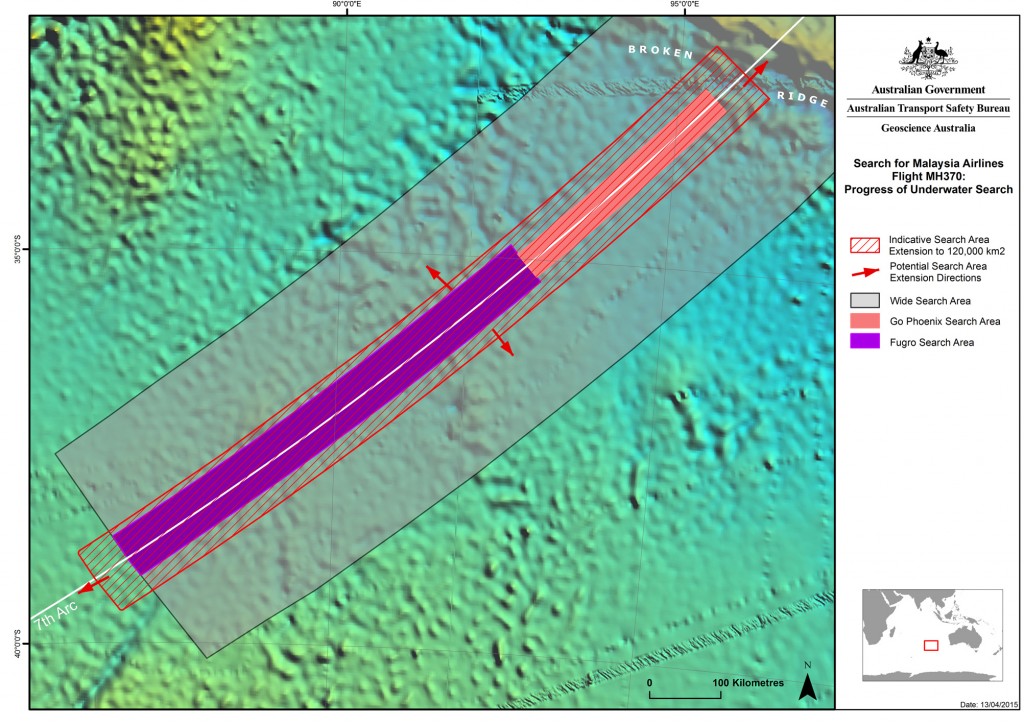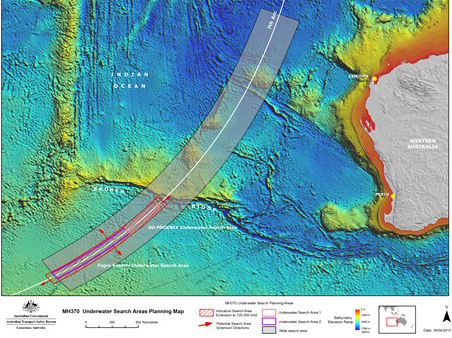Robotic submarine scanning of the Indian Ocean floor within the priority search zone for missing Malaysia Airlines flight MH370 has been suspended after recent changes to the search plan, authorities say.
The aircraft, a Boeing 777-200ER, flying from Kuala Lumpur to Beijing, disappeared off radar over the South China Sea, less than an hour after takeoff on 8 March 2014 with 239 people, including 12 crewmembers on board.
The adverse weather experienced over the last few weeks is already affecting use of the automated underwater vehicles (AUV), and rough seas are making it difficult to launch and retrieve it, said Australia’s Joint Agency Coordination Centre (JACC) on Wednesday.
“The decision has been made to suspend AUV operations in the search area during the winter months. As a result, Fugro Supporter will withdraw from the search on completion of her present swing,” it said.
“Safety of the search crews also remains a priority”.
Current underwater search efforts, started 6 October 2014, have involved 4 vessels (GO Phoenix, Fugro Discovery, Fugro Equator and Fugro Supporter) towing deep water vehicles with side-scan sonar, multi-beam echo sounders, and video cameras in sweeping a 60,000 sq km area of seabed. From late January, with the arrival of Fugro Supporter, AUV operations started to scan areas which cannot be effectively scrumbed by equipment on the other vessels.
Over 75% of the seafloor in the existing search area has already been searched with clue found.
Transport Ministers from Australia, China and Malaysia announced on April 16 that they would double the current search zone to 120,000 sq km to “cover the entire highest probability area identified by expert analysis” if no trace of the missing plane is found by late May.
Searching in the expanded area will commence as soon as possible with focusing search efforts in the south to take advantage of the last of the better weather in that area.
JACC also hinted that the current search zone might be re-adjusted as expert review continues.
“The Search Strategy Working Group continues to review evidence associated with MH370 which may result in further refinement of the search area,” it said.
The extended area will constitute about 95% of the calculated flight path of the plane, but searchers hope they will find a trace in the current search zone by late May.
The high priority search area has been drawn based on “handshakes” between the plane and a communications satellite.
As the plane’s transponders, which transmit the plane’s location to air traffic controllers, were manually switched off from inside the cockpit, hourly satellite pings were the only interaction kept live for hours – after which investigators believe the aircraft ran out of fuel.
Investigators said in the initial report that movements are consistent with the deliberate action of someone on the plane.








